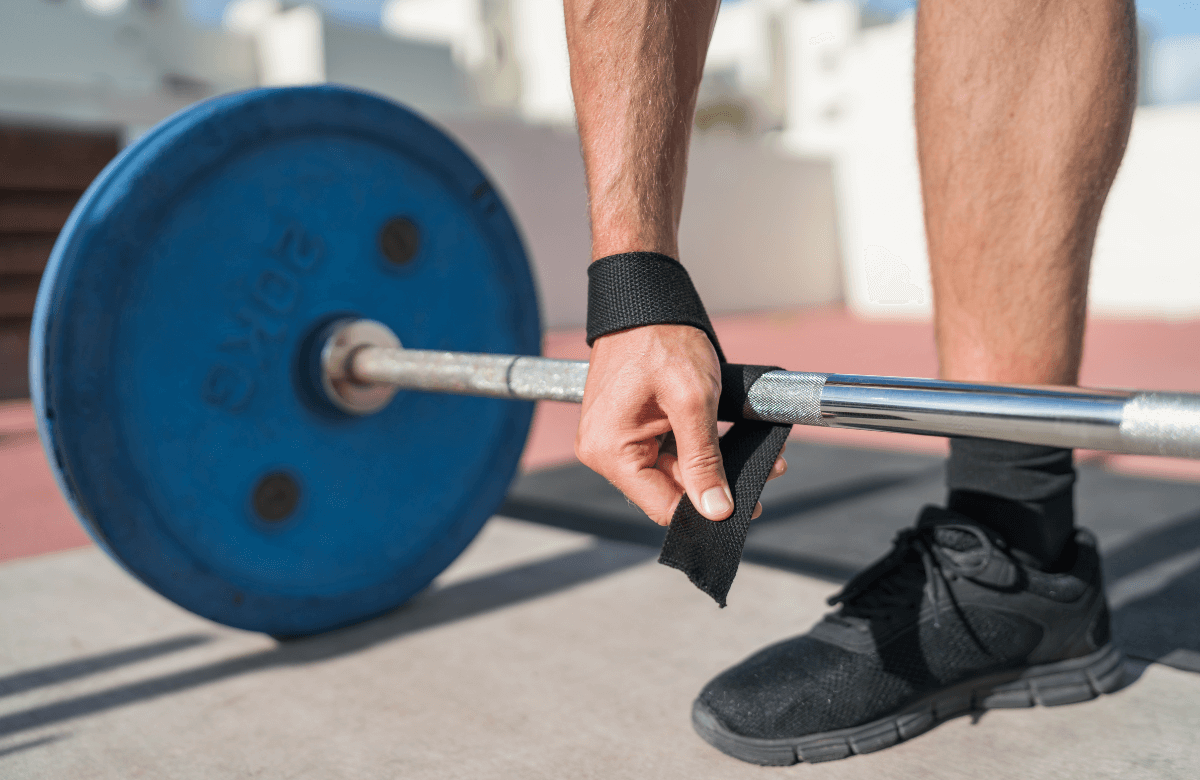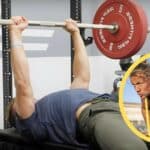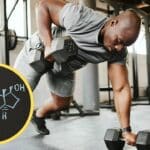Have you seen the biggest guy in your gym? What are those things around his wrists? They’re probably deadlift straps. Weight lifting straps are an affordable accessory that can dramatically increase your lifts.
Don’t feel intimidated if you’ve never used wrist straps before. Let’s take a closer look at how to use deadlift straps, the benefits, and how to purchase a pair that suits your needs.
Beginner weightlifters and experienced weightlifters alike use wrist wraps. They are advantageous for heavier loads and give you an extra grip advantage. There’s a lot to learn about straps for deadlifting, so here are a few basics to get you started:
- It’s possible to use straps for weightlifting with a mixed grip, overhand grip, and hook grip.
- Straps for deadlifts can increase your maximum weight capacity.
- There are different materials, like nylon, leather, and cotton lifting straps.
- Wrist wraps can be used with classic lifts, heavier pulls, heavy singles, barbell rows, and more.
Jump to:
What Are Deadlift Straps?
Deadlift straps, weightlifting straps, or wrist straps are well-built fabric straps designed for heavy pulling movements. They’re typically made from nylon, canvas, or leather. The straps loop around the wrist and barbell to improve grip strength.
Deadlift straps are used by novices and intermediates alike, as they provide grip support and can improve maximum load. If you’re strong enough to move the weight, but your grip is lacking, it may be time to upgrade to a pair of high-quality lifting straps.
Why Should You Use Lifting Straps?
There are several reasons a lifter would want to include lifting straps for their deadlift. Most lifters wear wrist straps to improve their grip, as grip strength is one of the first things to give out during heavy lifts. Besides enhanced grip, deadlift straps can help protect your hands and increase safety.
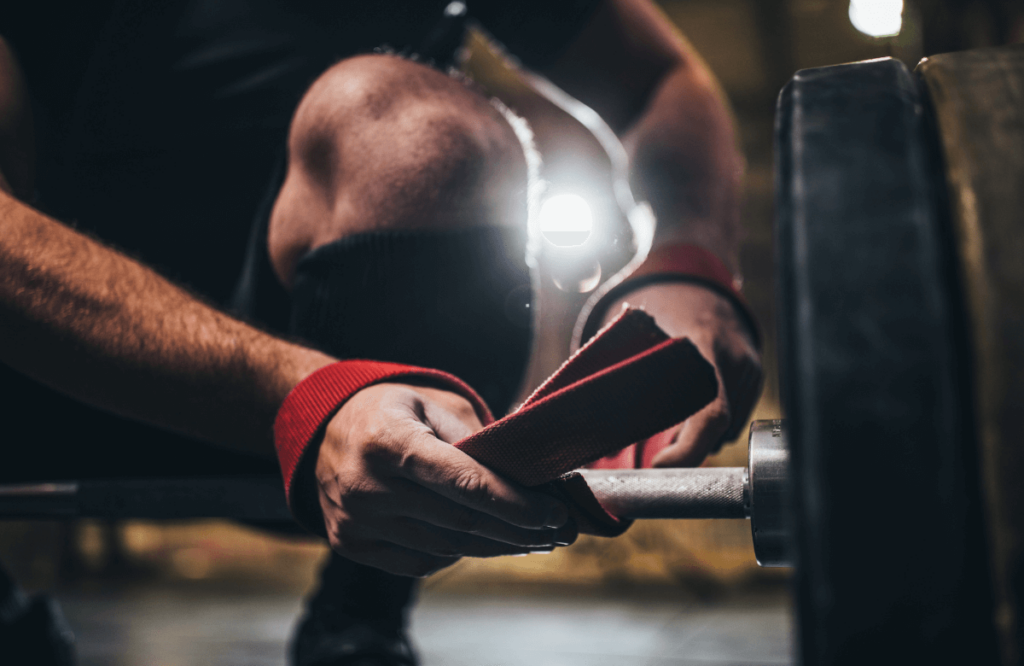
Stronger Grip
Lack of grip strength is one of the common culprits behind plateaus on the deadlift. Your legs and back might be strong enough, but if the barbell constantly slips out of your hands, then you won’t be able to lock it out. Although you can adjust your grip technique or use accessory exercises, the easiest way to improve your strength is with deadlift straps.
Weightlifting straps reduce the pressure on your hands and wrists during heavy pulls, allowing you to reach maximum capacity. They’re a must if your grip prevents you from progressing on the deadlift.
Hand Protection
Have you ever seen a powerlifter’s hands? Were they covered in chalk, calluses, and blisters? During heavy lifts, like the deadlift, the barbell rubs against the palms causing minor injuries like blisters or calluses. Weight-lifting straps can help protect the hands by redistributing tension away from the palms. The reduced tension and pressure can save your hands from painful blisters, calluses, and cuts.
May Increase Safety
Besides injuries, lifting straps can also increase safety during heavy pulls. One study found that wrist straps can increase grip recovery after training alongside perceived security.
Faster recovery times can help you avoid overexertion, strain, and injury. Higher levels of perceived security might allow you to use more strength during a lift without worrying about the bar slipping out of your hands.
Complete More Reps
Do you want to get big? Complete more reps. All the benefits of deadlift straps mentioned above help you complete more repetitions.
Stronger grip strength allows you to hold onto heavier weights for more extended periods. Protecting your hands helps you avoid calluses or blisters that get in the way of your lifts. Lastly, the increased safety and recovery help you give it your all.
If you’ve plateaued on the deadlift or lose grip strength on max reps, it’s time to invest in heavy-duty wrist straps.
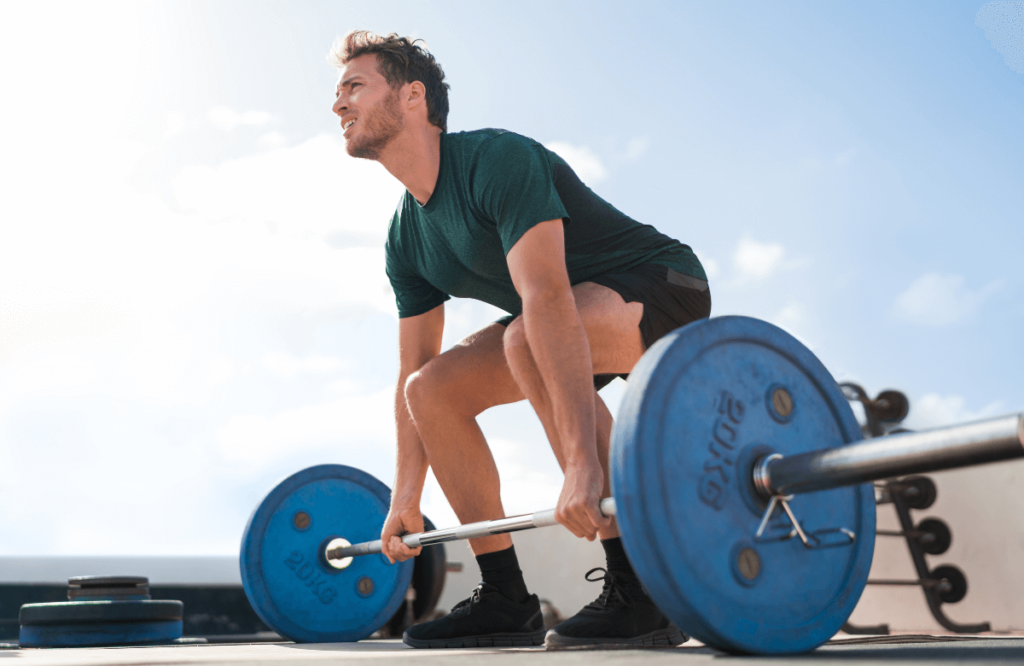
How to Use Deadlift Straps
So, you just bought a pair of all-black leather weight-lifting straps, and you’re standing at the deadlift platform ready to lift—but how do you use the straps? Don’t worry; you don’t have to be a boy scout to know how to use deadlift straps. Follow the steps below to start.
Putting on the Straps
- First, create a loop by slipping one end of the strap through the other. Weight-lifting straps are around 2 feet long, with one end having a 2-inch hole. Grab the end of the strap with the hole and stick the other end through it. Use about 10 inches of the strap to create the tiny loop.
- Now, slip your hand through the loop until it’s around the base of your hand. There should be a dangling strap hanging across your palm and fingertips. If the cross of the straps is on the back of your palm, flip the strap around.
- Next, secure the loop around your hand by pulling on the nagging end of the wrist strap until it’s snug. Only tighten it enough, so it’s secure in place but doesn’t restrict movement or cause discomfort. The strap should be moderately low on the hand, between the base of the thumb and wrist bone.
- Repeat the same steps for the second hand. Remember not to tighten the weight-lifting strap around your wrist, as it can cause issues when you lift.
Fastening the Straps around the Bar
- First, place your dominant hand over the barbell securely on the ground. The strap should hang beneath the barbell. If you’re going to deadlift and aren’t practicing, you should have the weights preloaded.
- Next, wrap the hanging strap around the barbell a few times. Ensure the right hand is a few inches away from the bar as you loop the strap beneath it. The loops should overlap one another, and there shouldn’t be any loose material.
- Now, tighten the straps by rotating your hands on the barbell. Every time you add another loop, turn your palm on the barbell so your knuckles move closer to your body (imagine revving an engine on a motorcycle). This tightens the strap and secures it in place.
- Lastly, attach the other wrist strap to the bar. You’ll need to use your thumb and fingers to loop the strap around the bar. Once you loop the strap, use the same revving motion to tighten the strap. Once the strap is tight, you’re ready to lift.
- You can let go of the straps and barbell with your hands to unravel the deadlift straps once you’re finished lifting.
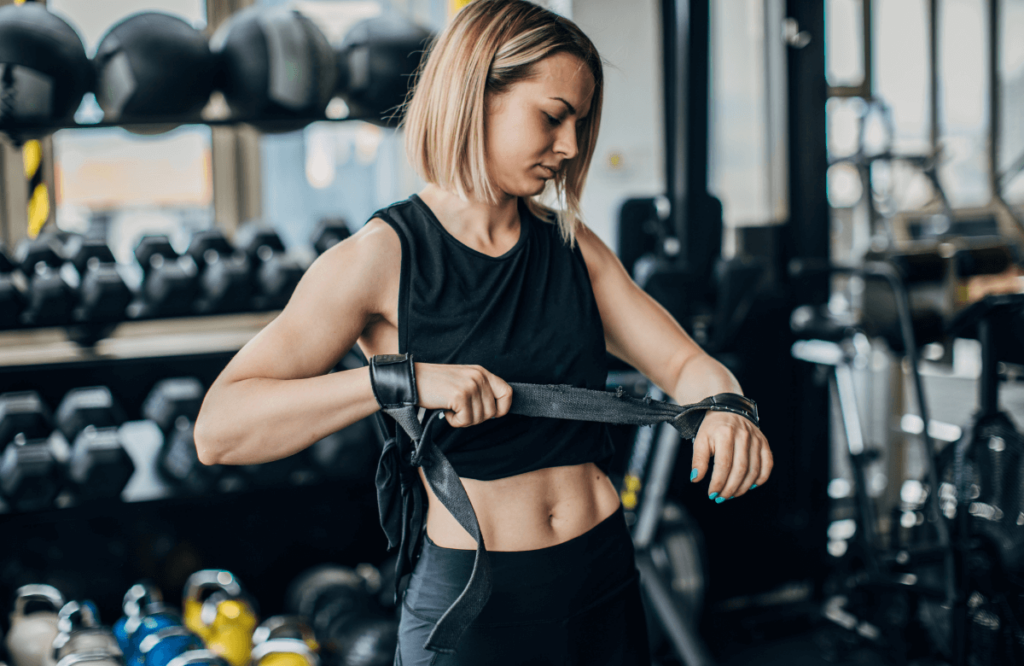
Are Deadlift Straps Cheating?
The simple answer is no; deadlift straps are not cheating. Weight lifting straps provide several benefits, like reduced fatigue, additional grip support, and protection for the wrists. Not only that, but professional powerlifters use straps in training and competition. If wrist straps help the strongest men on the planet, then they’re sure to help you reach your fitness goals.
Finding the Right Type of Straps
So, you’re ready to purchase a pair of heavy-duty deadlift straps to take your lifts to the next level, right? Then you’ll need to know how to find the best deadlift straps that suit your goals, tastes, and budget. Let’s take a closer look at how you can find suitable straps.
Lasso, Single Loop, and Figure 8 Straps
- Lasso: The Lasso is the most common weight-lifting strap, as it’s versatile and can be used for several movements. That said, lasso straps do not release quickly and are not ideal for Olympic movements like the clean and jerk.
- Single Loop: Single loop straps provide minimal support but offer instant release, which is fantastic for Olympic exercises, like the snatch or clean and jerk
- Figure 8: The Figure 8 strap is thick and includes two large loops that allow you to secure the barbell snuggly to the wrist. Figure 8 straps are excellent for heavy-duty situations like heavy deadlifts and powerlifting.
Cotton for Comfort, Nylon for Speed, Leather for Durability
- Cotton: If comfort is a significant concern, consider cotton wrist straps. Cotton is comfortable against the skin and absorbs sweat very well.
- Nylon: Nylon won’t absorb sweat as well as cotton, but it’s ideal for Olympic movements as it’s durable and quickly releases the barbell.
- Leather: Looking for durability and stability? Check out leather deadlift straps. Leather offers the most stability but takes quite some time to break in and can be rough on the skin.
Look for High-Quality Construction
Besides the construction and material, ensure you purchase high-quality straps. The straps should have thick stitching that doesn’t feel stretchy. Stretchy or loose straps will degrade over time, and you’ll quickly need a replacement.
The Straps Should Have a Texture
Any material besides leather should have a textured feeling. The additional texture provides more traction that helps you grip the bar easier. Avoid weight-lifting straps that are entirely smooth or that have little texture.
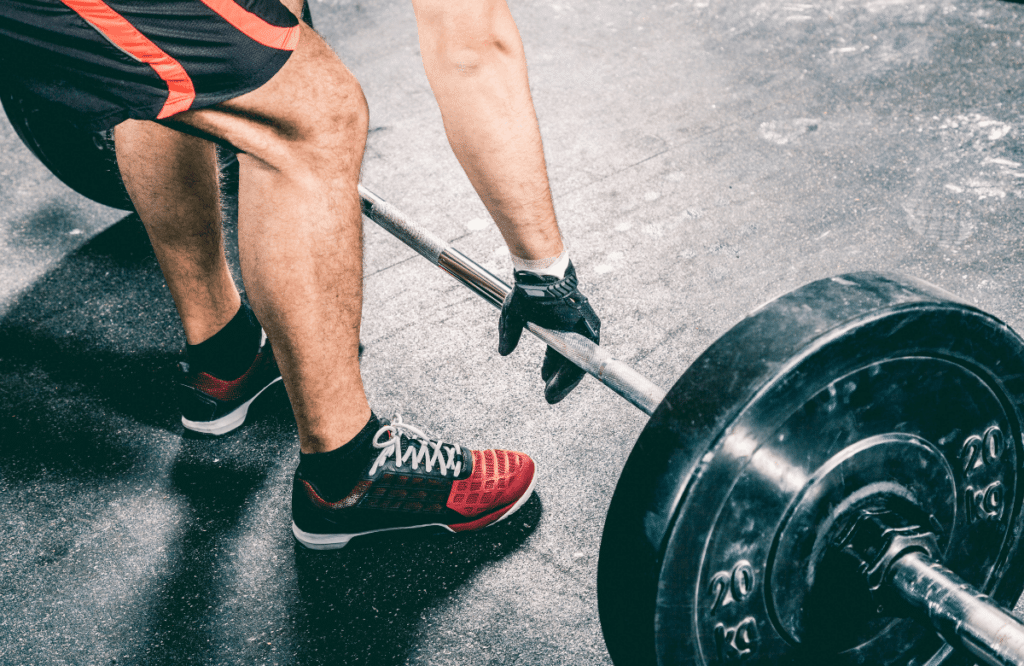
Frequently Asked Questions
How Many Pounds Do Straps Add to the Deadlift?
Weight-lifting straps provide increased grip strength, security, and protection. Many lifters have increased their compound movements by 10-30% when incorporating straps into their routines. That said, your mileage will significantly depend on variables like fitness levels, exercise type, straps, and more.
Is It Okay to Use Straps When Deadlifting?
Yes, it’s perfectly normal to use straps when deadlifting or for similar compound movements. Weight lifting straps provide additional grip strength and security when moving the bar. They’re used by professional bodybuilders, powerlifters, Olympic athletes, and everyday gym goers.
Is It Better to Deadlift Without Straps?
Your grip strength may become a weak point if you always rely on weight-lifting straps. This can be problematic if you compete, play sports, or you want to avoid muscle imbalances. That said, deadlift straps are handy and used by professional lifters inside and outside competitions. If you’re concerned about your grip strength, use straps sparingly and incorporate grip strength training into your programming.



